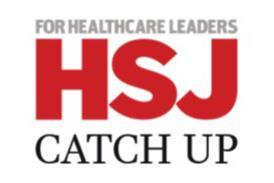To properly understand and make the most of clinical leadership in the NHS means going beyond the stereotypes that dominate politics and the media, says Roland Petchey
Management is not a back office function, the preserve of faceless bureaucrats, isolated from the delivery of care; it is an essential part of the job for many clinicians.
On the front line, in fact, clinical and managerial roles are inextricably intertwined.
‘Everywhere it was difficult – if not impossible – to separate management and clinical work’
Previous research on clinician-managers has helped to perpetuate a belief in the distinctness of clinical and managerial roles, largely because it has concentrated on doctors in senior management, such as chief executives or medical directors.
The National Institute for Health Research has focused deliberately on frontline clinician-managers instead and spent a year talking to, observing and shadowing a variety of allied health professional managers − including radiographers, physiotherapists, occupational and arts therapists − in four very different healthcare settings, ranging from a major teaching hospital to an inner city community mental health service for older people.
Shared challenges
Our clinician-managers faced a common set of national policy imperatives. The most important of these were:
- to eliminate budget deficits;
- the “Nicholson challenge” to reduce management costs by 45 per cent and to release £20bn in efficiency gains by 2015;
- preparing for GP commissioning; and
- transforming community services.
As a result, all four sites had undergone at least three years of rapid and radical change, which appeared to be set for the foreseeable future. However, these played out differently in each locality.
In one, it meant rationalising services in response to a financial crisis; elsewhere it was dealing with the aftermath of primary care trust mergers or integrating community services. Consequently, we found multiple styles of clinician management, not just one.
‘Management was constantly threatening to “take over”, resulting in a perpetual struggle to “keep it under control”’
We did find some common features though. Everywhere it was difficult − if not impossible − to separate management and clinical work.
A job description might specify a number of sessions of management but in practice it was impossible to compartmentalise it. Clinical work was so pressured, fast and unpredictable it had to be accompanied by a constant stream of managerial decisions.
As one radiographer said: “A list can be full and then by 10am it can be empty, through no fault of wrong planning or anything, just how it’s worked out. Or you can end up with a list that is so full… you’re going into out of hours with an emergency.”
As consequence, management was constantly threatening to “take over”, resulting in a perpetual struggle to “keep it under control” and “fit it all in”.
Attitudes towards management
Over and above the policy changes already noted, all four sites had also experienced another more subtle, but marked and rapid, change: attitudes towards management.
‘Constant reorganisations and the repeated experience of having to apply for their own jobs had left them insecure and apprehensive’
After three decades of being promoted as drivers of modernisation, managers now found themselves redefined as a bureaucratic “drag” on frontline clinicians, who now needed to be set free from managerial interference. Suddenly management was out and clinical leadership was in.
However, this wave of negativity towards management had not passed our clinician-managers by. Constant reorganisations and the repeated experience of having to apply for their own jobs had left them insecure and apprehensive about their futures.
Selling out
It may also have fed into their wariness of the label “manager” and concern to distance themselves from the politics, horse trading and competitiveness they believed typified it.
They contrasted themselves with senior management who they viewed as remote and disengaged from the reality of the front line, driven by targets and the bottom line. Commonly they saw themselves as stuck between the frontline clinicians and “the ones at the top running a business”.
‘Even though many of them had “leader” in their job title, our clinician-managers hardly ever talked of themselves as leaders’
“The higher you move up the management hierarchy, the more you lose sight of your professional values. You sell your soul; you do the grovelling and toe the party line,” said one.
By contrast, they saw their own managerial practice as shaped by the same professional values that informed their clinical work − caring for their patients, their team and their service. Emotional labour was at its core.
Traditional leadership
Finally, we were struck by the continuing dominance of traditional ideas about leadership, quite at odds with the “post-heroic”, “distributed” model the NHS is trying to introduce.
Even though many of them had “leader” or “lead” in their job title (team lead, therapy lead and so on), and could point to substantial achievements in leading change, our clinician-managers hardly ever talked of themselves as leaders. Leadership was something they associated with exceptional or heroic individuals. It ran counter to their values of professional collegiality and team working.
Frontline clinician-management is here to stay, so it is crucial that we enable people to realise their potential. Our findings have implications for the way we educate and train clinician-managers in leadership.
They suggest we need to recognise the complexity of the problems they face; appreciate and build on their existing management achievements; and acknowledge the importance and diversity of professional cultures.
Professor Roland Petchey is honorary visiting professor of health services research and policy at City University, London. This article presents independent research funded by the National Institute for Health Research. The views expressed are those of the author and not necessarily those of the NHS, the NIHR or the Department of Health.



























1 Readers' comment